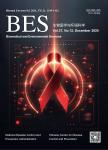Modulation of Isoflavones on Bone-nodule Formation in Rat Calvaria Osteoblasts in vitro
Modulation of Isoflavones on Bone-nodule Formation in Rat Calvaria Osteoblasts in vitro作者机构:DepartmentofToxicologySchoolofPublicHealthFudanUniversityShanghai200032China DivisionofBoneMetaboilismResearchInstituteofRadiationMedicineFudanUniversityShanghai200032China
出 版 物:《Biomedical and Environmental Sciences》 (生物医学与环境科学(英文版))
年 卷 期:2003年第16卷第1期
页 面:83-89页
核心收录:
学科分类:1002[医学-临床医学] 100214[医学-肿瘤学] 10[医学]
主 题:Daidzein Genistein ICI 182780 Osteocalcin Bone-nodules Osteoblast
摘 要:Objective To observe the effects of two main isoflavones, daidzein and genistein on the bone-nodule formation in rat calvaria osteoblasts in vitro. Methods Osteoblasts obtained from newborn Sprague-dawley rat calvarias were cultured for several generations. The second generation cells were cultured in Minimum Essential Medium supplemented with ascorbic acid and Na-beta-glycerophosphate for several days, in the presence of daidzein and genistein, with or without the estrogen receptor antagonist ICI 182780. Number of nodules was counted at the end of the incubation period (day 20) by staining with Alizarin Red S calcium stain. The release of osteocalcin, as a marker of osteoblast activity, was also determined on day 7 and day 12 during the incubation period. Results Compared with the control, the numbers of nodules were both increased by incubation with daidzein and genistein. 17β-estradiol was used as a positive control and proved to be a more effective inducer of the increase in bone-nodules formation than daidzein and genistein. The release of osteocalcin into culture media was also increased in the presence of daidzein and genistein, as well as 17β-estradiol on day 7 and day 12 (day 12 were higher). The estrogen receptor antagonist ICI 182780 completely blocked the genistein- and 17β-estradiol-induced increase of nodule numbers and osteocalcin release in osteoblasts. However, the effects induced by daidzein could not be inhibited by ICI 182780. Conclusion These findings suggest that geinistein can stimulate bone-nodule formation and increase the release of osteocalcin in rat osteoblasts. The effects, like those induced by 17β-estradiol, are mediated by the estrogen receptor dependent pathway. Daidzein also can stimulate bone-nodule formation and increase the release of osteocalcin in rat osteoblasts, but it is not, at least not merely, mediated by the estrogen receptor dependent pathway.



